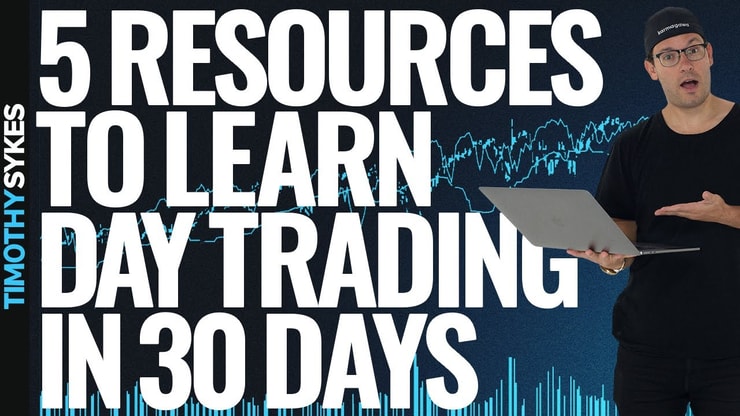Selecting the right stocks is pivotal in day trading. Unlike traditional investing, day trading focuses on short-term profits from stocks, requiring a different approach and understanding. This article aims to guide you through five essential steps to pick stocks effectively for day trading, based on my years of experience in the field.
Read this article because it provides a comprehensive guide on how to pick stocks for day trading, offering insights from my years of experience in the field.
I’ll answer the following questions:
- What are stocks?
- What is day trading?
- How do you pick stocks for day trading?
- What role do brokers play in day trading?
- How do you identify active stocks and set up a watchlist?
- How do you analyze market sentiment and analyst picks?
- Why is using financial services important in day trading?
- How can social media be used in day trading?
Let’s get to the content!
Table of Contents
- 1 What Are Stocks?
- 2 What Is Day Trading?
- 3 How To Pick Stocks for Day Trading
- 4 Key Takeaways
- 5 Frequently Asked Questions
- 5.1 What Are the Best Stocks for Day Trading?
- 5.2 What Market Is Easiest to Day Trade?
- 5.3 How Can I Make Consistent Profits Day Trading?
- 5.4 What Types of Stocks Are Ideal for Swing Trading?
- 5.5 How Do Investment Strategies Vary for Options Buyers and Writers?
- 5.6 Can You Use Credit Cards or Life Insurance Loans for Day Trading?
- 5.7 Why Are Compliance and Ethics Important in Stock Trading?
- 5.8 What Are Some Key Sites for Day Trading Research?
What Are Stocks?

Stocks, essentially, are shares in the ownership of a company. When you buy a stock, you’re buying a small part of that company. Stocks are traded on exchanges like Nasdaq, where price movements are driven by supply and demand. This dynamic nature of stocks makes them attractive for day traders. In day trading, you capitalize on these price swings, buying and selling stocks within a single trading day to profit from short-term movements. Understanding the nature of stocks and the stock market is the first step towards becoming a successful day trader.
What Is Day Trading?
Day trading is the practice of buying and selling securities within a single trading day. It’s a strategy that takes advantage of short-term price movements in the stock market. Day traders leverage various tools and strategies, like technical analysis and chart patterns, to identify potential trades. Unlike swing trading or long-term investing, day trading requires quick decision-making and a keen eye for market trends and movements. It’s about making the most of the market’s volatility, turning small, short-term price changes into opportunities for profit.
Day trading is a dynamic and challenging field that requires a comprehensive grasp of market trends, technical analysis, and risk management. It’s not just about picking stocks; it’s about understanding how to maneuver in the fast-paced world of the stock market. For those looking to explore day trading further and gain a more in-depth understanding, check out my detailed insights on day trading.
How To Pick Stocks for Day Trading
Picking stocks for day trading is a nuanced process that goes beyond just looking at stock prices. It’s about understanding the entire trading environment, including various markets like the money market, real estate market, and especially the fast-paced world of ETFs (Exchange-Traded Funds) and day trading stocks. Investors must navigate through an array of assets, considering everything from average performance to how different market sectors, like bonds and money market funds, are behaving.
Brokers play a crucial role in providing access to necessary tools and information. A good broker not only offers a platform to place orders and manage positions but also provides resources for fundamental analysis, insights on market trends, and advice on risk management. This includes understanding the use of stop loss and limit orders, and how to leverage these tools to control losses and optimize rewards.
Effective stock picking also involves a thorough understanding of various investment strategies. Whether it’s focusing on sectors with high growth potential or those showing signs of lows or highs, the strategy should align with your overall investment goals and risk tolerance. It’s about managing your margin, maintaining control over your trades, and constantly adapting your trading strategy to the market’s direction.
Furthermore, traders must stay informed and educated. This means regularly reading articles, reviews, and seeking advice from experienced traders. It’s essential to stay compliant with regulations and laws, ensuring ethical trading practices. Effective management of your trading account, aligning your budget and savings with your trading goals, and understanding the risks involved are all part of the decision-making process. The choice of stocks is not just about potential profit; it’s about fitting within your overall trading strategy and what you’re comfortable with in terms of risk, investment, and the financial products available to you.
Identify Active Stocks and Setting Up a Watchlist
The first step in picking stocks for day trading is identifying active stocks with high liquidity and volatility. Stocks with high volume and significant price movements offer the best opportunities for day traders. Setting up a watchlist of such stocks, based on factors like market capitalization, recent news, and industry trends, helps you focus on potential trades. This watchlist becomes your go-to resource for monitoring stocks and making quick, informed decisions.
The best traders watch more than they trade. That’s what I’m trying to model here. Pay attention to the work that goes in, not the picks that come out.
Sign up for my NO-COST weekly watchlist to get my latest picks!
Analyze Market Sentiment and Analyst Picks
Understanding market sentiment is crucial. This involves analyzing news, reports, and market analysis to gauge the mood of the market. Analyst picks and expert opinions can also offer valuable insights into which stocks are poised for movement. Remember, in day trading, timing is everything, and keeping a pulse on market sentiment can give you a head start.
Market sentiment indicators provide valuable insights into the overall mood of the market, helping traders make more informed decisions. These indicators can be a game-changer, especially when combined with technical analysis and other trading strategies. To learn more about how market sentiment indicators can enhance your trading strategy, delve into my comprehensive guide on market sentiment indicators.
More Breaking News
- Semler Scientific’s Bitcoin Gamble: Prospects for a Financial Upswing?
- Quantum-Si’s Bold Moves: Is a Bright Future Ahead or Trouble in Sight?
- Is Walgreens on the Brink of a Reinvention or a Slip?
Use Financial Services
Utilizing financial services, such as brokerage tools and trading platforms, provides access to essential data and analysis. These services offer research reports, real-time data, and technical analysis tools, all of which are invaluable for making informed trading decisions. A reliable trading platform is a must-have for any serious day trader.
Use Social Media
Social media can be a goldmine for up-to-the-minute information. Following relevant authors, companies, and other traders on platforms like Twitter can provide immediate insights into market trends and potential stock movements. However, it’s important to verify the information and use it alongside more formal research and analysis.
Screen Stocks Using Technical Indicators
Technical indicators like trends, momentum, resistance, and support levels play a critical role in day trading. These metrics help identify entry and exit points, providing signals on when to buy or sell. Mastering chart patterns and indicators is a vital skill for any day trader looking to profit in the stock market.
Understanding and effectively using these indicators can significantly improve your trading decisions and profitability. For traders eager to master the art of using technical indicators in day trading, I’ve compiled a wealth of information and tips on the most effective day trading indicators.
Key Takeaways

- Day trading revolves around making profits from short-term price movements in stocks.
- Picking the right stocks involves understanding market trends, liquidity, and volatility.
- Utilizing a combination of market research, financial services, and technical analysis is key.
- Keeping informed through social media and news can provide an edge in making swift decisions.
Trading isn’t rocket science. It’s a skill you build and work on like any other. Trading has changed my life, and I think this way of life should be open to more people…
I’ve built my Trading Challenge to pass on the things I had to learn for myself. It’s the kind of community that I wish I had when I was starting out.
We don’t accept everyone. If you’re up for the challenge — I want to hear from you.
Apply to the Trading Challenge here.
Trading is a battlefield. The more knowledge you have, the better prepared you’ll be.
How do YOU pick stocks for day trading? Let me know in the comments — I love hearing from my readers!
Frequently Asked Questions
What Are the Best Stocks for Day Trading?
The best stocks for day trading are those with high liquidity and volatility. These characteristics allow for easier entry and exit at desired price points. Often, these stocks are from large companies with a lot of trading activity and are sensitive to market news and events.
What Market Is Easiest to Day Trade?
The stock market, particularly major exchanges like NASDAQ, is commonly considered the easiest to day trade due to its liquidity and the vast amount of information and analysis available. However, ‘easy’ is relative in trading; success requires strategy, knowledge, and constant learning.
How Can I Make Consistent Profits Day Trading?
Consistent profits in day trading come from a combination of disciplined strategy, ongoing learning, and adapting to market changes. It’s about managing risk, understanding market mechanics, and leveraging analysis tools effectively. Continuous education and experience play a significant role in achieving consistency.
What Types of Stocks Are Ideal for Swing Trading?
Swing trading typically involves stocks with high beta values, indicating more significant price fluctuations suitable for short-term trading. Earnings reports and market opportunity play crucial roles in selecting these stocks. For example, companies with upcoming earnings announcements may present profitable trading opportunities due to expected volatility.
How Do Investment Strategies Vary for Options Buyers and Writers?
The investment strategy for buyers often focuses on immediate market opportunities and evaluating beta and earnings potential. In contrast, an option writer must consider additional factors like spreads, the underlying stock’s stability, and prevailing market rates to manage risks effectively.
Can You Use Credit Cards or Life Insurance Loans for Day Trading?
While technically possible, using credit cards or loans for day trading is generally not advised due to the high risks and potential for significant losses. A more prudent approach involves using funds from a savings account, like an IRA (Individual Retirement Account), dedicated to investment purposes.
Why Are Compliance and Ethics Important in Stock Trading?
Adherence to compliance and ethics is crucial in stock trading to ensure fair practices and avoid legal issues. This includes understanding and respecting regulations on trades, especially when dealing with complex instruments like options or when swing trading. Ethical practices also help maintain a trader’s reputation in the industry.
What Are Some Key Sites for Day Trading Research?
Some key sites for day trading research include financial news platforms like Yahoo or Benzinga, and stock analysis websites like this one. These sites provide examples of successful trades and offer names of stocks that might present lucrative opportunities for investors, traders, and others.




Leave a reply